|
|
 |
|
|
World War III: Canadian Catalogue
|
WWIII: NATO Forces Spotlight
Back in 2018, we released Free Nations as our first multi-national book for Team Yankee. It added four more nations to the roster of forces with which to play. Free Nations started as an idea to add some of the forces of the smaller NATO nations but grew into something a little more when it was suggested we add the French. The project transformed from a loose idea to do some downloadable content, into a fully-fledged book with four Western nations (well, technically five if you choose to run your ANZACs as New Zealanders).
We have now further expanded this book into World War III: NATO Forces by expanding the forces and units available to the original four choices, and have also added a fifth nation, the Belgians.
WWIII: NATO Forces Spotlight...
|
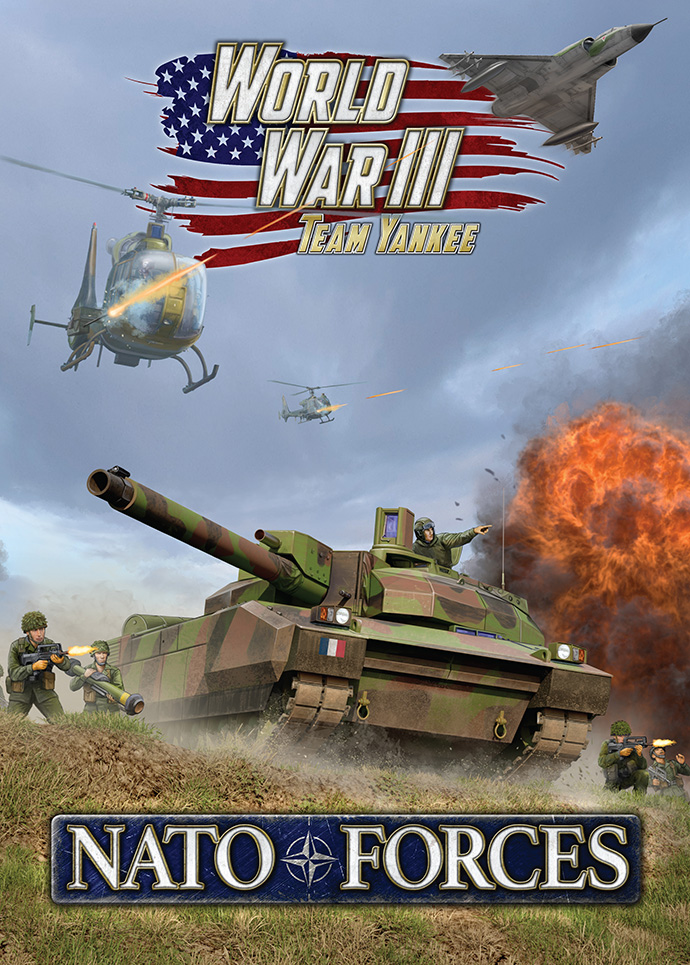
|
|
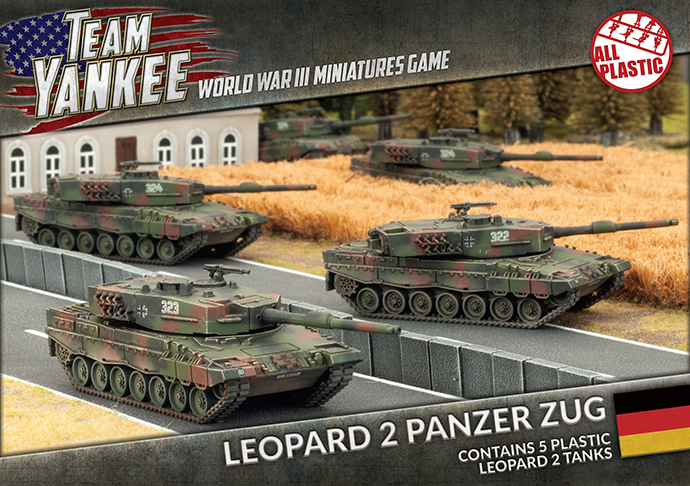
|
Leopard 2 Panzer Zug (Plastic) (TGBX01)
Though the West Germans were hard-pressed in all theatres, their respect and appreciation of the veteran Canadian crews made their decision to supply the Canadians with Leopard 2 tanks easy. The Canadians received enough of these excellent tanks to field an armoured regiment in the European theatre.
Leopard 2 Panzer Zug (TGBX01)...
|
|
Leopard 1 Panzer Zug (Plastic) (TGBX14)
The Krauss-Maffei Leopard 1 adopted by the Canadians was the Leopard 1A3 with a welded turret fitted with the Belgian SABCA computerized fire-control system. The new tank was named the Leopard C1.
The first Leopard C1 tanks were delivered in June 1978. These first tanks went to the Royal Canadian Dragoons, stationed in Lahr, West Germany.
Leopard 1 Panzer Zug (TGBX14)...
|
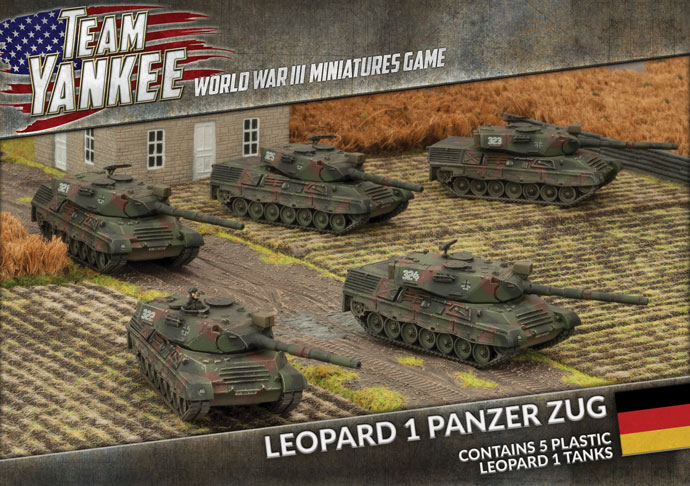
|
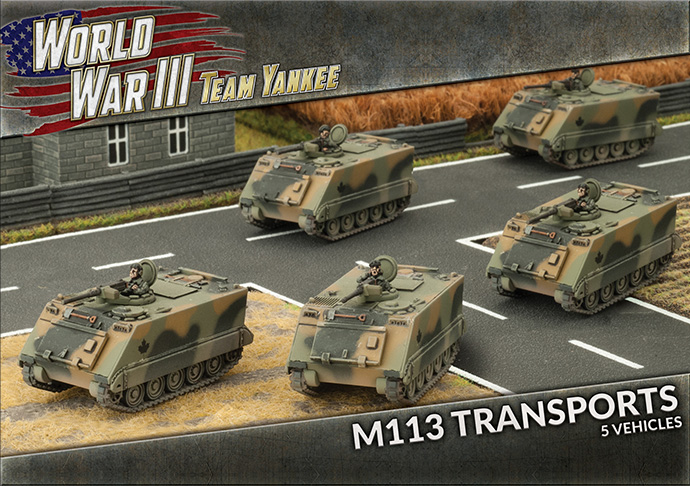 |
M113 Platoon (Plastic) (TNBX03)
The mechanised platoons of 4 Canadian Mechanized Brigade Group are trained and prepared for large-scale combined arms defence and counterattacks against a Warsaw Pact invasion of West Germany and Western Europe. Training, equipment and tactics are designed to face this threat, and annual exercises keep them fully prepared.
M113 Platoon (TNBX03)...
|
|
LAV Platoon (Plastic) (TUBX16)
The 8-wheeled Coyote is a non-amphibious armoured vehicle based on the design of the LAV-25. The Coyote was designated for service with both the Regular Force and Reserve Force. Though primarily a reconnaissance vehicle, plans had it earmarked as an armoured training and infantry support vehicle much like the 6-wheeled Cougar.
LAV Platoon (TUBX16)...
|
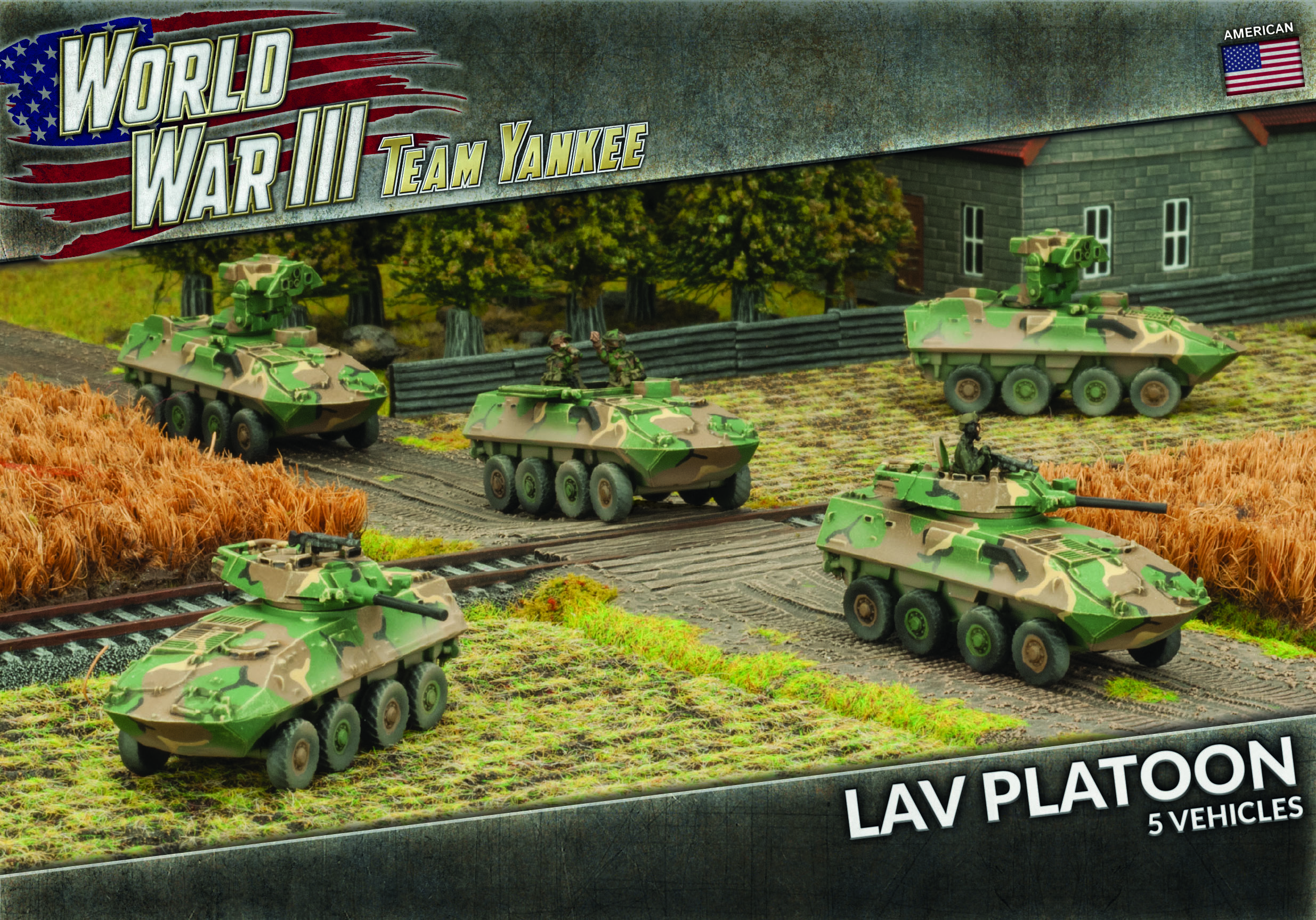
|
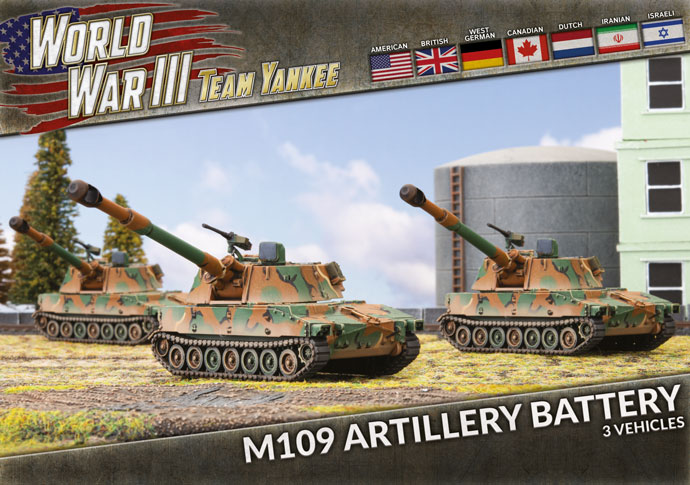 |
M109 Artillery Battery (Plastic) (TUBX24)
The Royal Canadian Horse Artillery, which provides the artillery support for 4 Canadian Mechanized Brigade Group, fields four batteries of six M109s. The M109s provide the Canadians with a powerful indirect fire weapon that can hit enemy positions at long range, destroying concentrations of troops with high-explosive rounds, or mask troop movement with smoke.
M109 Artillery Battery (TUBX24)...
|
|
Lynx Reconnaissance Patrol (TCA300)
The Canadians replaced their Ferret armoured cars with the new M113 Command and Reconnaissance Vehicle (M113 CRV), or as the Canadians designated it, the Lynx. The Lynx was built by FMC, who already manufactured the M113 armoured personnel carrier, and the Lynx, though smaller, shared many of the M113 APC’s components. Like the M113, the Lynx is amphibious.
Lynx Reconnaissance Patrol (TCA300)...
|
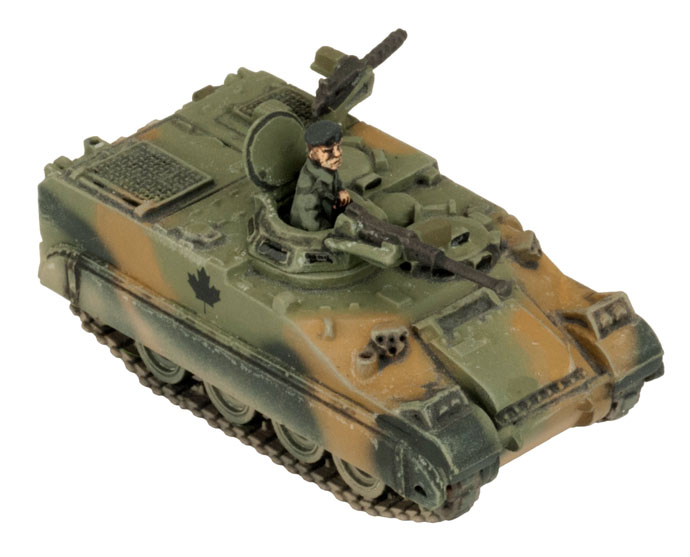
|
|
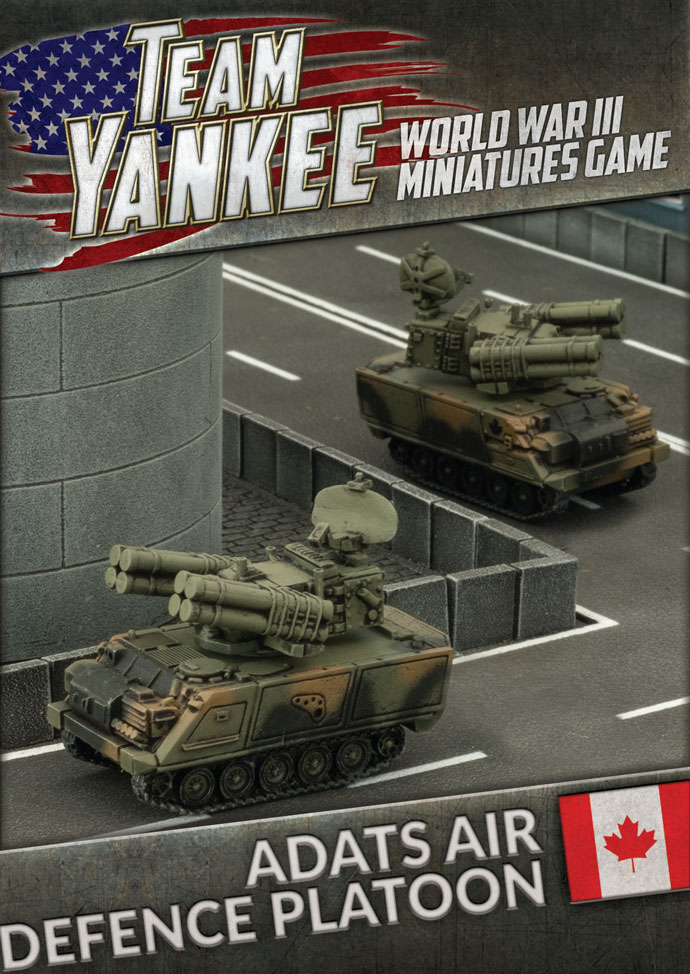
|
ADATS Air Defence Platoon (TCBX01)
Before 1985 the Canadians had shown an interest in the Oerlikon-Contraves’s Air Defence Anti-Tank System (ADATS). Some test systems have been supplied to the Royal Canadian Horse Artillery in Germany to test its dual-purpose short-range surface-to-air and anti-tank missile capabilities in combat.
ADATS Air Defence Platoon (TCBX01)...
|
|
Grizzly Transports (TCBX04)
The Grizzly was used as an armoured personnel carrier in regular force infantry battalions not equipped with the M113 APC, and also by reserve units. The Grizzly APC had a three-man crew and could carry a section of infantry. It mounted a turret armed with a .50 cal MG and a 7.62mm machine-gun.
Grizzly Transports (TCBX04)...
|
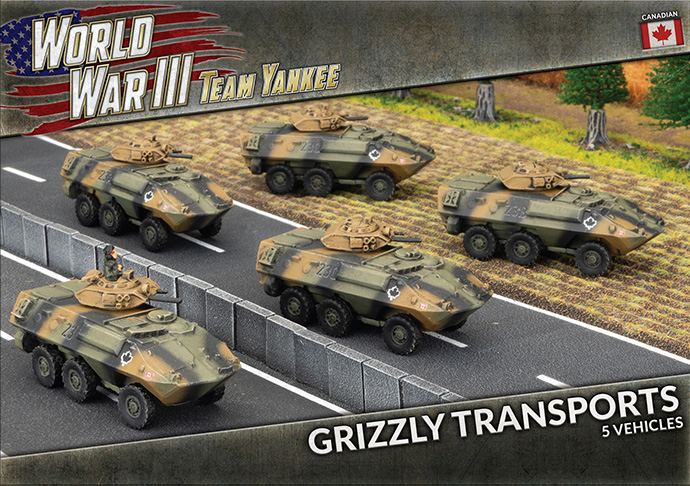
|
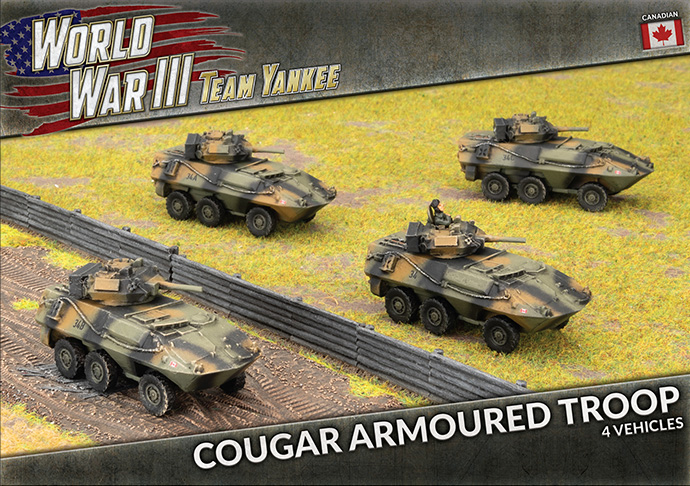 |
Cougar Armoured Troop (TCBX03)
The Cougar is a 6-wheeled variant of the Swiss Mowag Piranha manufactured in Canada. It is used as a tank trainer, reconnaissance, and fire support vehicle with those armoured regiments not equipped with Leopard 1 tanks.
Cougar Armoured Troop (TCBX03)...
|
|
Iltis Patrol (TCA120)
The eyes and ears of the regiment on the ground are the recon troops mounted in Iltis jeeps (Polecat in English). They patrol ahead of advancing troops, as well as forward of fixed positions, finding the enemy and keeping their commanders informed of enemy movement and strength. These reconnaissance units utilised the Iltis for its speed and mobility.
Iltis Patrol (TCA120)...
|
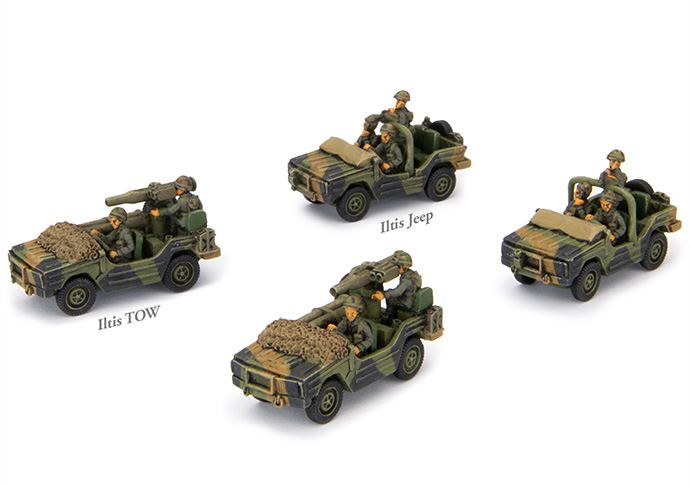
|
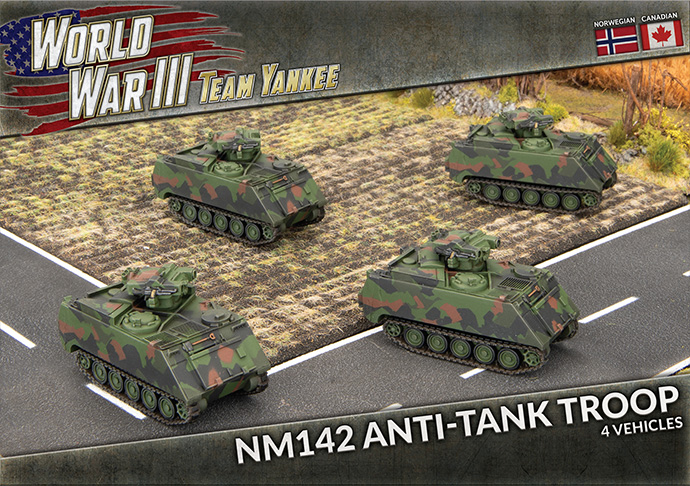 |
NM142 Anti-tank Troop (TNOBX02)
The M113 TUA (TOW Under Armour) is the Canadian version of the Norwegian NM142 anti-tank vehicle. It is very similar to the Norwegian vehicle. The M113 TUA has been acquired to upgrade anti-armour capabilities in Force Mobile Command, supplementing weapons already available in armoured units and infantry anti-armour units.
The M113 TUA variant is fitted with an armoured turret equipped with twin launchers to fire TOW missiles.
NM142 Anti-tank Troop (TNOBX02)...
|
|
Mechanised Platoon (x44 Figs) (TCA712)
A Canadian mechanized platoon is organised into three sections and a command group. A section usually consists of ten men, a section commander (Sergeant) and 2IC (Master Corporal) each armed with a C1 FN assault rifle, M113 driver with an SMG, three riflemen with C1 FN assault rifles, two C2 heavy-barrel FN Squad Automatic Weapon (SAW) gunners, a Carl Gustav 84mm SRAAW (M) (Short-Range Anti-Armour Weapon-Medium) gunner and a Carl Gustav 84mm SRAAW (M) loader with a C1 FN assault rifle.
Mechanised Platoon (x44 Figs) (TCA712)...
|
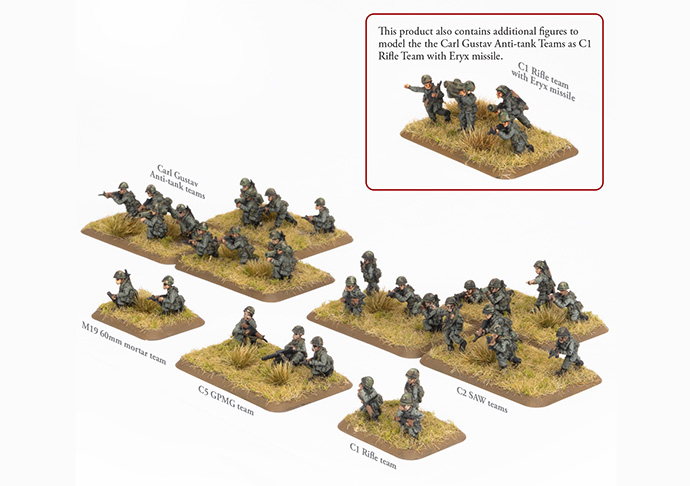
|
|
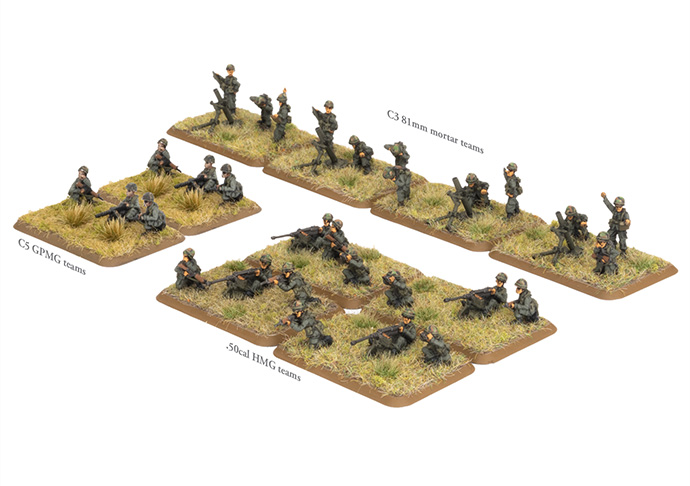
|
Airborne Weapons Group (x24 Figs) (TCA714)
The Canadians decided, as Soviet doctrine was to use waves of infantry and armoured vehicles to overcome opposition, that the .50 cal HMG could be used dismounted against both infantry and their lightly armoured personnel carriers as part of a defensive position. In the case of the Airborne Regiment, where they did not have armoured vehicles armed with similar weapons, a complement of tripod-mounted .50 cal heavy machine-guns was added to the weapons available to the airborne commandos. The Canadian Airborne Regiment also had a platoon of eight C3 81mm mortars.
Airborne Weapons Group (x24 Figs) (TCA714)...
|
|
Tornado Strike Flight (TGBX15)
The Tornado strike-aircraft was developed as a joint project between Germany, Britain, and Italy. The main role of the Tornado is as an Interdictor Strike (IDS) aircraft. The Tornado has a variable sweep-wing system. The pilot can change the sweep of the wings to change the aerodynamics of the aircraft. With the wings swept back drag was reduced during critical high-speed low-level dashes towards enemy positions. With the wings swept forward the Tornado takes on the characteristics of slower flight, allowing it to land and take-off on short runways.
Tornado Strike Flight (TGBX15)...
|
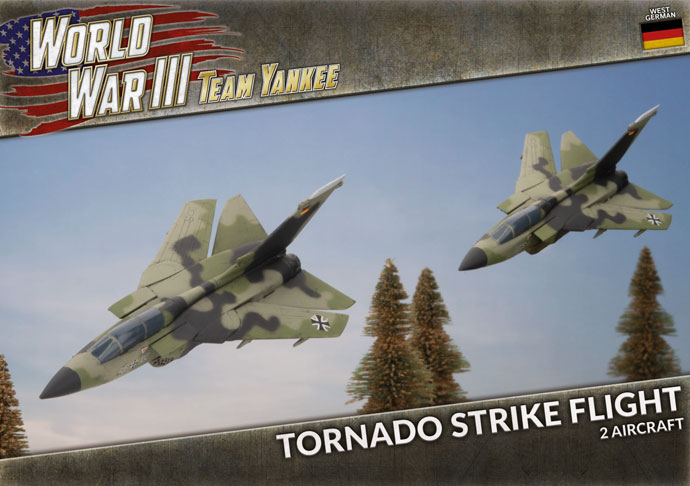
|
|
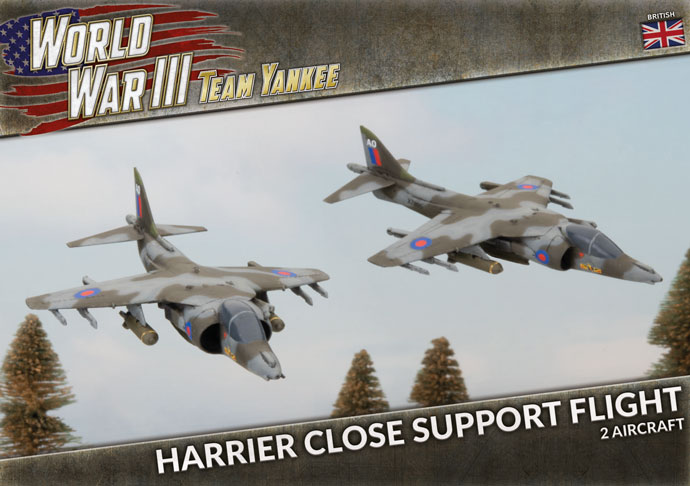
|
Harrier Close Support Flight (TBBX15)
The Hawker-Siddley Harrier, the famed ‘Jump Jet’ could swivel its exhaust nozzles down to allow it to take off vertically. The RAF uses this capability to base the Harrier out of super-market car parks and other concealed locations close to the front, reducing the interference from Soviet aircraft and allowing a higher sortie rate than conventional aircraft.
Harrier Close Support Flight (TBBX15)...
|
|
A-10 Warthog Fighter Flight (TUBX27)
Although its official designation is the Thunderbolt II, the rather odd-looking A-10 is commonly, if unflatteringly, known as the ‘Warthog’. The A-10 is built around a massive 30mm GAU-8/A Avenger seven-barrelled Gatling gun that fires depleted uranium rounds, and in its tank-busting role, carries TV-guided Maverick missiles. On top of that, its armoured cockpit and high-mounted engines give it outstanding resilience when hit by enemy fire.
A-10 Warthog Fighter Flight (TUBX27)...
|
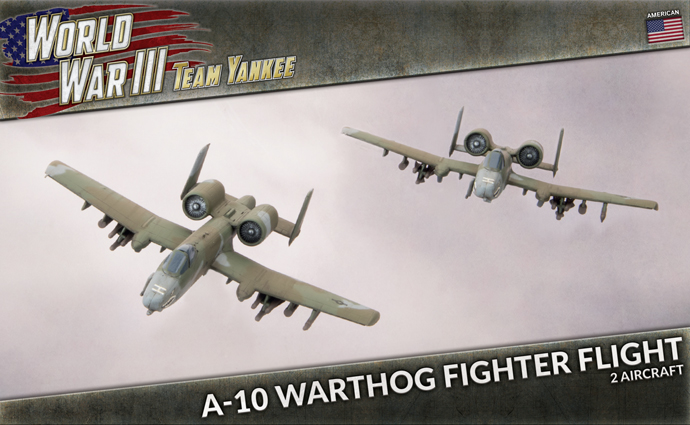
|
|
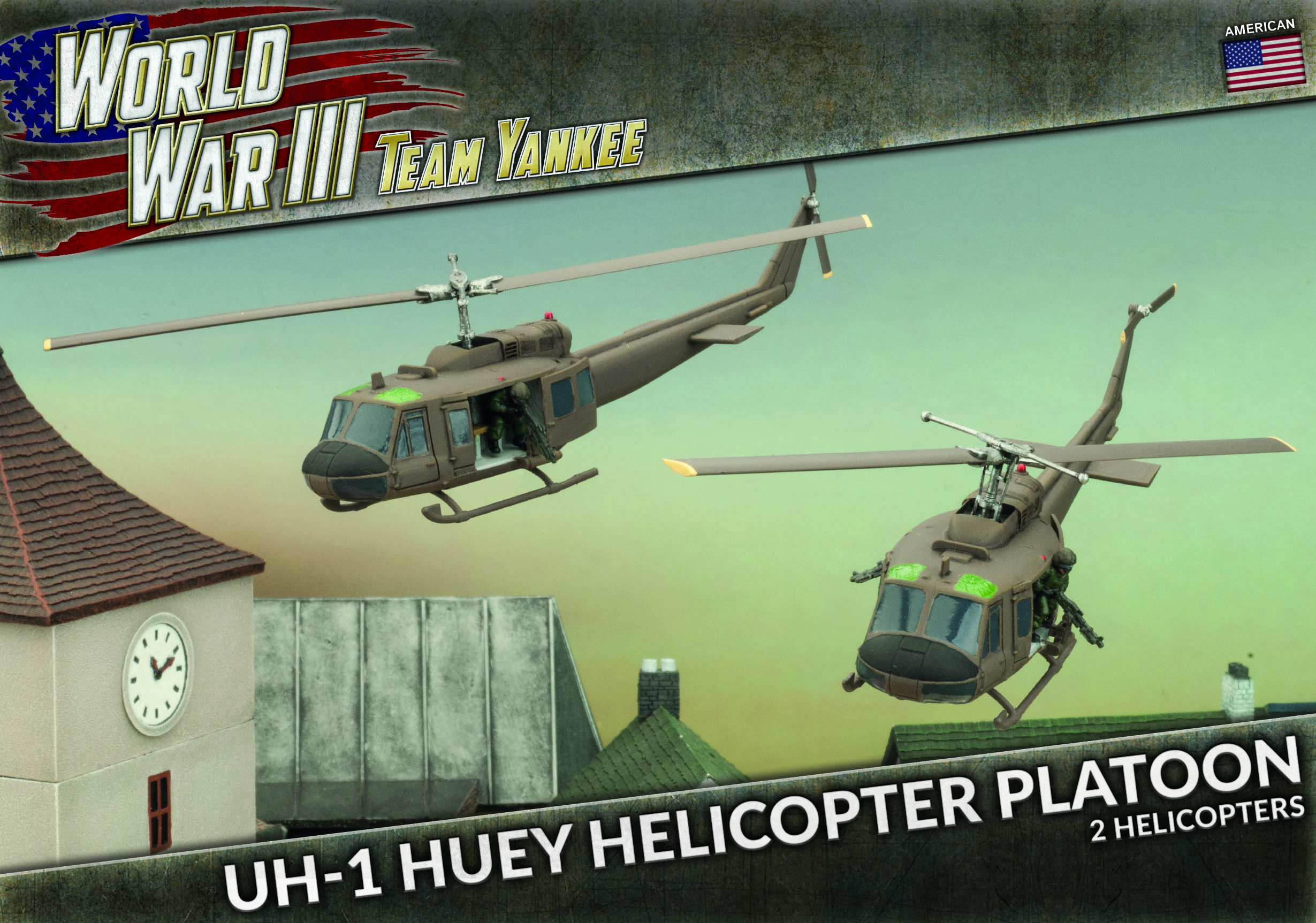
|
UH-1 Huey Helicopter Platoon (TUBX07)
A Canadian Airborne Platoon is equipped with much the same weapons as the rest of the Canadian infantry. Riflemen are armed with C1 rifles and each section has a C2 SAW team.
The airborne troops are all parachute-qualified and could be transported into combat in twin-engine UH-1 Huey helicopters or dropped from C-130 transport aircraft.
UH-1 Huey Helicopter Platoon (TUBX07)...
|
|
World War III: Canadian Unit Cards
Unit and Formation cards play a key role in World War Three: Team Yankee and can be used as a quick reference for stats and special rules as you play the game. These cards also include unit points and structures to aid with army-list construction.
World War III: Canadian Unit Cards (WW3-09C)...
|
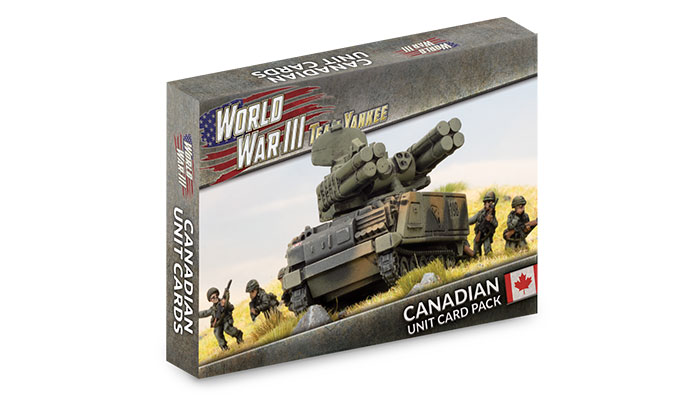 |
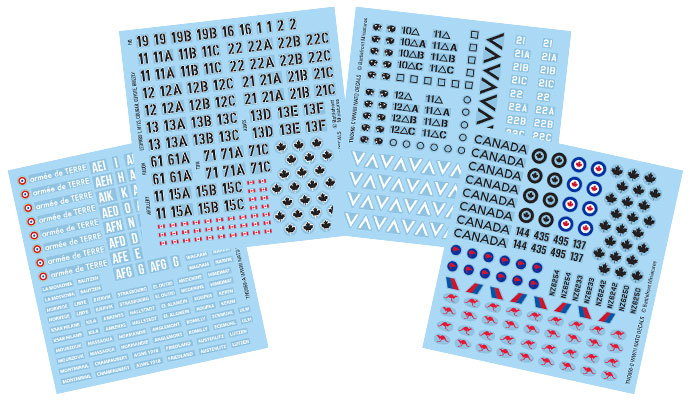 |
NATO Forces Decal Sheet (x4) (TNA951)
The NATO Forces Decal Sheet pack contains all the decals you need to equip your ANZAC, Canadian and French armoured vehicles and aircraft.
NATO Forces Decal Sheet (x4) (TNA951)...
|
|
|
Battlefront Paint Sets
Each Paint set together with the Utility Paint Set, provides the specialist colours needed to paint your WWII or WWIII force in the appropriate colours all in an easy to grab box. Get everything painted! From the camo paint all the way to the tow cables.
Battlefront Paint Sets...
|
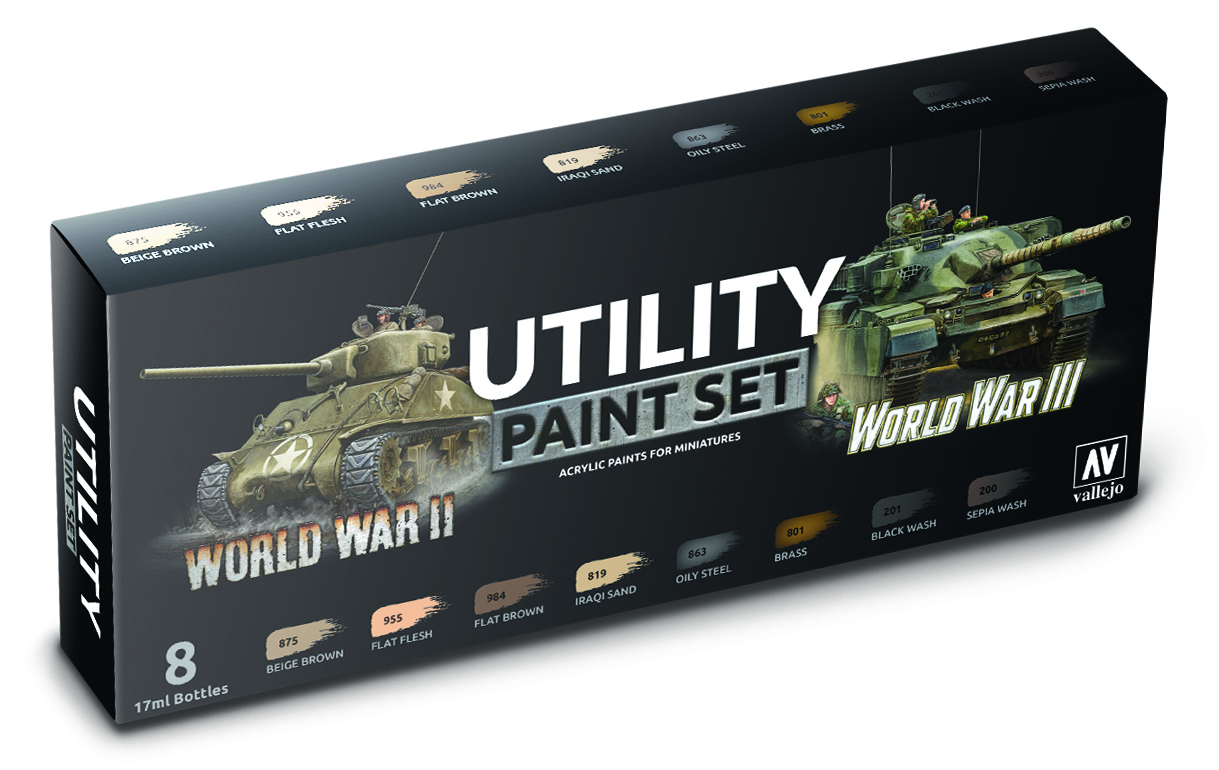
|
Last Updated On Wednesday, November 22, 2023 by Ryan Smith
|
|
|